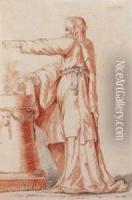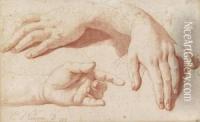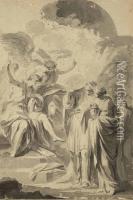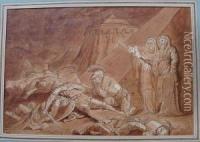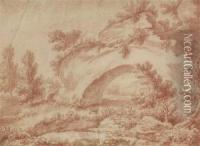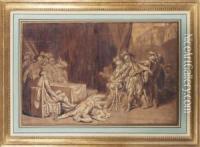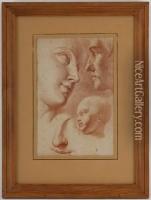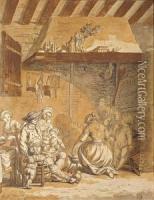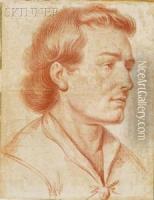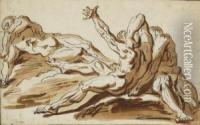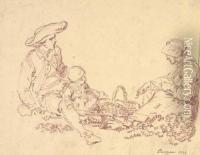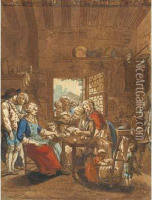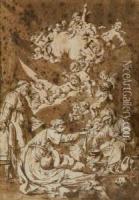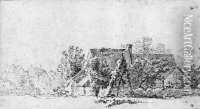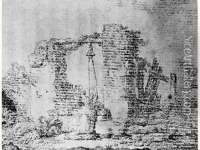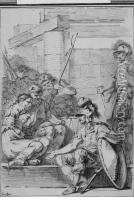Philippe-Louis Parizeau Paintings
Philippe-Louis Parizeau, also known as Parizeau the Younger to distinguish him from his father, was a French engraver born in 1740 in Abbeville, France. He was known for his delicate and detailed engravings that depicted a variety of subjects, including portraits, genre scenes, and illustrations for books. Parizeau was initially trained by his father, who was also an engraver, before moving to Paris to further his studies and career.
In Paris, Parizeau studied under the famous engraver Jacques-Philippe Le Bas. During this period, he honed his skills and began to establish himself as a talented engraver. His works were characterized by fine lines and careful attention to detail, which made them popular among art collectors and connoisseurs of the time.
Parizeau's engravings often reflected the tastes and styles of the French Rococo period, with its emphasis on lightness, elegance, and playful themes. He also created engravings after paintings by prominent artists of the day, such as François Boucher and Jean-Honoré Fragonard, which helped to disseminate their works to a wider audience.
Despite his skill and the quality of his work, Parizeau was not as well-known as some of his contemporaries. Nonetheless, he was a respected member of the artistic community and contributed to the rich tapestry of French art during the late 18th century.
Philippe-Louis Parizeau's career was affected by the political and social upheavals of the French Revolution, which led to a decline in the traditional patronage systems and changed the art market. He adapted to the changing times by producing works that aligned with the revolutionary sentiments when necessary.
Parizeau passed away in 1801, leaving behind a legacy of exquisite engravings that continue to be appreciated by art historians and collectors. His works are held in various museum collections and are studied as examples of the skill and artistry of engravers during the Rococo period in France.
